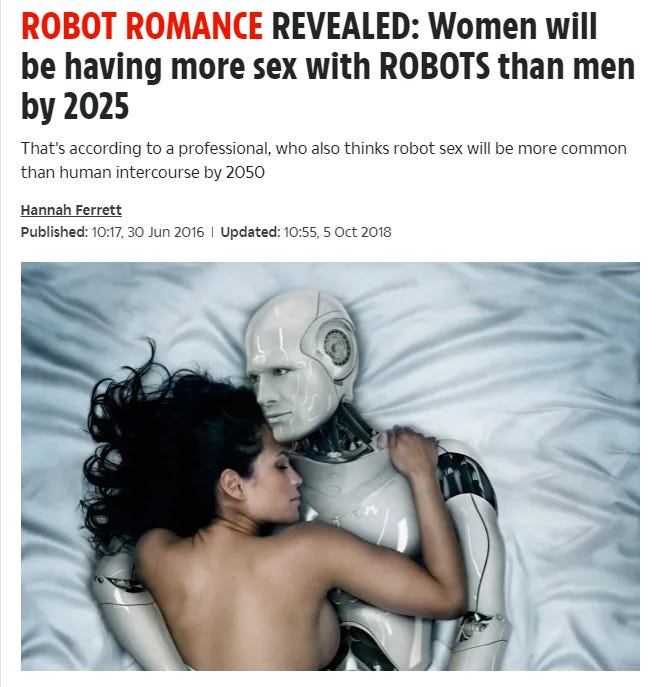Barbie in the Longhouse - Part 2
“You're gonna start getting sad and mushy and complicated”
Previously in Barbie Land: adults in kids’ movies, empowerment without power, patriarchy without men, and reading like a Straussian.
Fish Without a Bicycle
The year is 2025, and women are having more sex with ROBOTS than men. And why wouldn’t they? Throughout human history, women have needed men for resources and for protection. In 2025, that is no longer the case: young women are more educated and are out-earning young men in many cities, while both sexes have learned to rely on the state for protection from strangers.
So: what does a woman need men for in 2025?
Though released all the way back in the carbon-sexual days of 2023, Barbie is prescient in exploring this urgent question. The rate of stranger violence in Barbie Land is 0%, while the female wage gap is negative 1,000%. When Ken offers to be Barbie’s boyfriend, she’s incredulous: what do I need a boyfriend for?
This question causes a lot of unease on the online political right, among immature men who dismiss Barbie as woke propaganda for even asking it. They insist that women providing for themselves is bad actually because of some mumble about feminist brainwashing, declining birth rates, and an assessment of 1950s housewife happiness that’s based primarily on vintage butter commercials. And they’ll insist that women still need a man’s protection — from the state as much as from male strangers.
Women, including those on the right, are rightly skeptical:
The bet most women make, politically is: I’ll take my chances with the faceless machine who doesn't care enough to hurt me in particular.
Does it provide sufficient protection? No, but its dangers are diffuse and don't target them on a personal level. They can carve out an existence around its flaws, there are paths to exit in an egalitarian system. The reality is that the most dangerous place for a woman is still the home. This isn’t some paranoid fantasy, the threat of private violence is larger for women than the threat of public violence.
Barbie is a movie about the systems women create to protect themselves from violence, and also about the journey from childhood to adulthood. And in a subtle way, it offers an optimistic answer to the conundrum. Even in a land with no genitals, a woman needs a man for the same reason a man needs a woman —
Keep reading with a 7-day free trial
Subscribe to Second Person to keep reading this post and get 7 days of free access to the full post archives.




